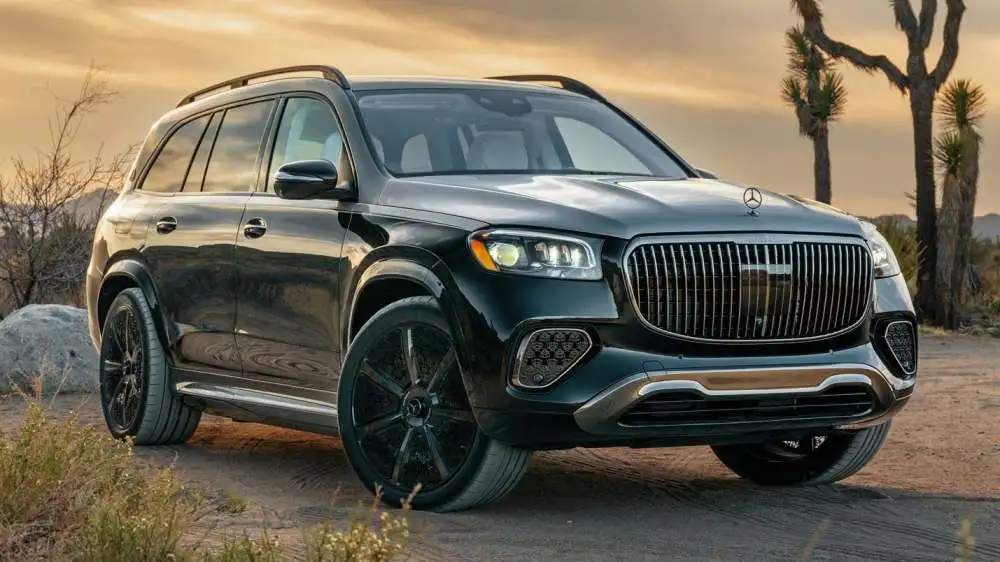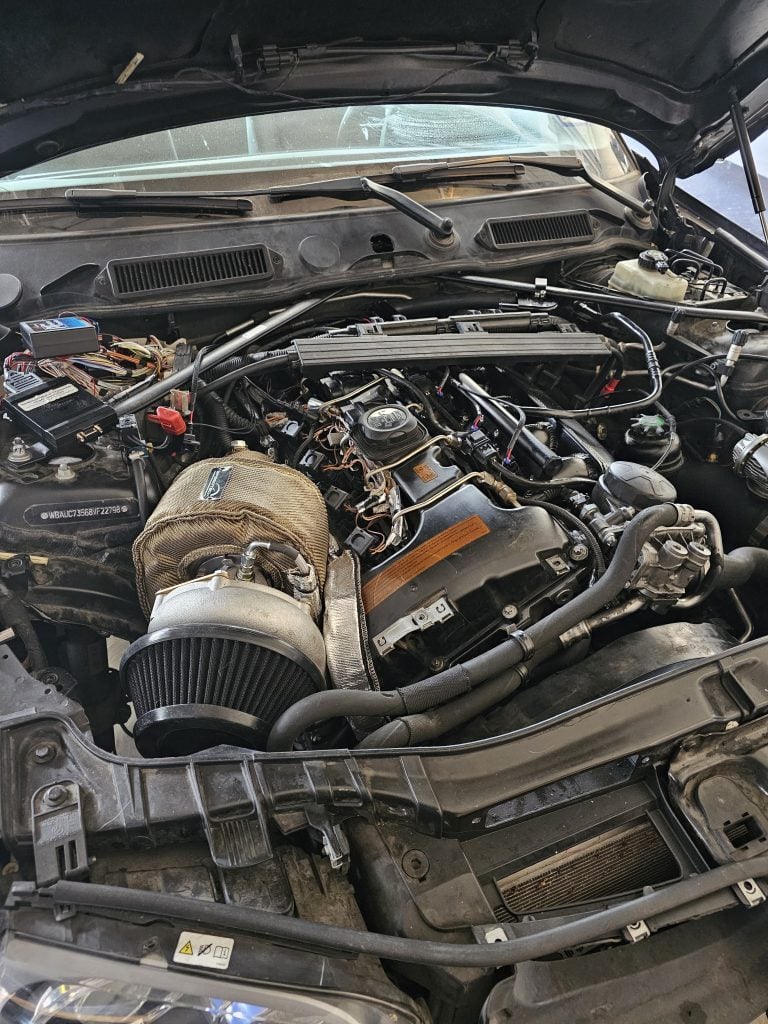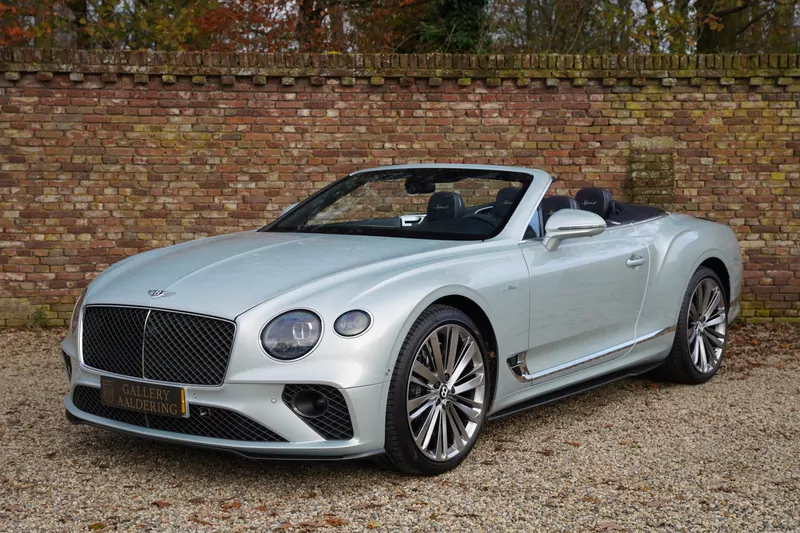Most Reliable BMW Engines
Let’s squatter it, BMW doesn’t have the weightier reputation for reliability. When I told my father that I had just purchased a 30-year-old BMW 325i for a daily driver, he nearly laughed me out of the room. He, withal with all of the wannabe comedians in my family loved throwing the oh-so-creative “Big Money Waster” acronym interpretation in my squatter at every endangerment they got. Well, without nearly 7 years of ownership, the only major hits to my wallet have come in the form of modifications.
While BMW has unquestionably built some certified bombs in the engine department, they have moreover built some of the most reliable engines to be placed under a hood. When it comes to the most reliable BMW engines, older naturally aspirated inline-6 engines, like the M30, M50, M54, and N52, spring to mind. However, over the two decades since the release of the N54, BMW has truly honed their turbocharged formula to a nearly flawless point as well as proven by the B58.
In this article, we’ll imbricate some of the most reliable BMW engines and discuss the few problems that those German workhorses still experience.
BMW M30 Engine
If I’m stuff honest, BMW doesn’t build engines like they used to; at least from a reliability standpoint. Looking when to the days of rotary phones and sideburns, engine technology was nowhere near as intricate and technologically reliant as it is today. While wide engine technology certainly has its perks, it moreover typically introduces spare reliability gremlins to venery down. BMW’s early straight-6 engines are a perfect example of less is more.

While I scrutinizingly put the BMW M20 straight-6 engine on this list in lieu of its heavier-hitting older brother, I figured that the M30 earned its spot in the limelight. Without all, the M30 is the engine that truly sealed BMW’s unparalleled reputation for smooth and reliable inline-6 powerhouses, sooner leading to other iconic engines like the M20 and S38.
The BMW M30’s overall construction laid out a formula that BMW stuck with for decades. The M30, which ranged in ostracism from 2.5L to 3.4L, featured a tint iron cylinder woodcut with an aluminum head, providing unparalleled bottom-end strength while still remaining restrictedly light. Like many other BMW engines to follow, the M30 had a number of forged internals including forged connecting rods and a forged crankshaft.
While high-quality build materials certainly played a role in the M30’s overall dependability, it was really the inline-6’s simplicity that made it one of the most reliable BMW engines ever. Its two-valve-per-cylinder single overhead cam diamond didn’t leave much room for anything to go seriously wrong. Its 27-year production run (making the M30 BMW’s longest-produced engine) in wing to Ward’s placement of the M30 on their “Top Engines of the 20th Century” list should hint at just how solid the M30 truly was.
Most Worldwide BMW M30 Engine Problems
Ultimately, the BMW M30 doesn’t have any truly inherent issues other than age-related ones. The overall construction of the M30 is nearly bulletproof, once then due to its overall simplicity. A single overhead cam, two valve per cylinder engine with little in the way of involved engine management doesn’t leave many things on the table to go wrong, earning it a spot on our most reliable BMW engines list.
With that stuff said, it has been over a half-century since the M30 was released, so problems are worldwide with increasingly perishable aspects of the engine nowadays. For instance, the M30’s cooling system has never been its strong suit, which is the same for most early BMW inline-6 engines. Items like the factory radiator, expansion tank, coolant hoses, radiator fans, thermostats, and water pumps are all worldwide failure points on the M30 if they haven’t been replaced.
The only other major problem to note when it comes to M30 reliability is throne gasket failure. While lightweight throne gaskets can’t be attributed to the M30’s diamond itself, it has wilt a known issue as the engine has aged, particularly virtually cylinder 6. Obviously, that results in reduced pinch on one or increasingly cylinders, requiring a throne gasket replacement.
While it should be a somewhat unspoken truth any old BMW engine is going to leak. Sometimes extensively and sometimes not much, it just depends on your luck of the draw. However, with an engine as old as the M30, it’s increasingly likely to be the former. The valve imbricate gasket, oil pan gasket, timing cover, timing cover, and timing uniting tensioners are all likely sources of oil leaks on the M30.
Most Reliable BMW Engines – BMW M50
Fast-forwarding an engine generation, the BMW M50 took over as the mainstay inline-6 powerplant for the majority of BMW’s smaller vehicles including the E36 3-Series and E34 5-Series. In terms of engine technology, the M50 was a seismic leap forward over previous BMW SOHC engines. The M50 introduced a dual overhead cam, 4 valves per cylinder tracery to BMW’s once famous inline-6 recipe, prepping their engine diamond for the 21st century.

Like the previous successful BMW inline-6 engines that came before, the M50 used a tint iron woodcut and aluminum cylinder head, which worked very well on early BMW engines surpassing BMW moved to all-aluminum engine construction. In total, the M50 was released in 5 variegated variants (excluding the S50) between 1990 and 1996, ranging in ostracism from 2.0L to 2.5L.
In 1992, only two years without the first M50 rolled off of the turnout line, BMW released a revised – or technical update – version of the inline-6. The M50TU, as it is wontedly called, introduced spare groundbreaking technology to the BMW engine lineup, primarily in the form of VANOS. VANOS variable valve timing is a staple of modern BMW engines, but it was all new in the early 90s. The M50TU only featured single VANOS on the intake camshaft, as double VANOS wouldn’t be introduced until the M52TU in 1998.
Having owned an M50-powered E34 for a while, I can vouch for the reliability of the straight-6. Like the M30 we discussed before, simplicity is what truly made the M50 one of the most reliable BMW engines. By the time I sold my E34, the car was falling untied virtually the engine, which should say something well-nigh its longevity.
Most Worldwide BMW M50 Engine Problems
There isn’t much to say here. As with the M30 that preceded the M50, there aren’t any serious issues with the M50’s overall design. All of the M50’s problems are age-related as well, as the M50 is 30 years old at this point. As a result, most of the primary issues with the M50 revolve virtually disintegrating rubber, lightweight cooling system components, and normal maintenance items like spark plugs and whorl packs.
Similar to the M30, the M50’s cooling system isn’t exactly known to be stellar. While part of that has to do with how BMW designed it, age is a significant factor here as well. In general, you’ll have to squint out for all of the problem areas. The most worldwide points of failure include the radiator, coolant expansion tank, coolant hoses, thermostat, and water pump. The water pump is unquestionably the most troublesome component on the list, as they are known for lightweight at relatively low mileage due to plastic impellers that are known for breaking.
While I’m likely going to sound like a wrenched record in this section and the sections to come, oil leaks are moreover prevalent on the M50, and from most of the same areas as the M30. Oil leaks are an inevitability on pretty much every BMW engine overly created, plane the most reliable BMW engines, so it shouldn’t be too big of a surprise on a 30 -year-old engine. Squint out for leaking valve imbricate gaskets, oil pan gaskets, throne gaskets, and oil filter housing gaskets if you are looking to purchase an M50-powered BMW.
Most Reliable BMW Engines – BMW M54 Engine
Alright, we’re moving on to our last old-school engine, I promise. While I am skipping over the M52 in favor of the M54, it definitely deserves a spot in the “honorable mentions” section, as the M52 is a solid lump too.

Like the M50 two generations before, the M54 was a bit of a trailblazer itself. While the M54 did infringe quite a few elements from the M52TU that arrived on the scene only two years prior to the M54’s release, the latter engine did a quality job towers on what the M52TU started. Some of the shared elements between the engines include an all-aluminum diamond supported by tint iron cylinder liners, double VANOS variable valve timing, and DISA variable intake manifolds.
While the similarities might make it seem like the two are nearly identical engines, the M54 has a couple up on the older engine. For one, the M54’s largest ostracism offering was 3.0L instead of the M52’s 2.8L. Other changes came in the form of a increasingly wide engine management system, electric throttle tenancy (which was controversial), and a revised intake manifold design. However, despite the advancements and larger role of engine management electronics, the M54 remained just as unsurmountable as the older engines that it replaced.
With power output ranging between 168 and 228 horsepower, the M54 was the go-to inline -6 powerhouse for vehicles as small as the E36/7 Z3 and as large as the E53 X5. Having owned an E46 325xi for two years, it was unquestionably one of, if not the most reliable BMWs that I’ve overly widow to my fleet, and that’s saying something. Outside of the predicable oil leaks, she held up like a champ, plane with 200,000 on the odometer.
Most Worldwide BMW M54 Engine Problems
While the M54 was released with a handful of significant technical and electrical revisions compared to the older M52 engine, none of these upgrades reduced the reliability of the newer BMW inline-6. The M54 has truly earned the right to be tabbed one of the most reliable BMW engines of all time. With that stuff said, there are a couple of worldwide issues that the M54 has piled over the years.
One of the most talked well-nigh issues when it comes to M54 worldwide problems revolves virtually the engine’s crankcase ventilation system. The job of the crankcase ventilation system and PCV valve is to unstrap the pressure that accumulates in the M54’s crankcase due to piston movement. It does that by recirculating blowby gas when into the engine and separating oil from the gaseous mixture and sending it when into the sump. If the M54’s crankcase ventilation system fails, it can rationalization a number of issues with engine performance, oil consumption, and difficulty starting. CCV issues are expressly worldwide in colder months when the PCV valve is increasingly likely to clog.
Due to the fact that the M54 is equipped with double-VANOS from the factory, VANOS issues are moreover a snooping on the BMW inline-6. That isn’t sectional to the M54, as all BMWs equipped with VANOS run into solenoid issues at some point in time. However, at the M54’s age, VANOS solenoid failure is increasingly worldwide now than ever.
These issues fall on top of the other various leaks and cooling system failures worldwide with all other BMW engines from the era including valve imbricate gasket issues, water pump failure, leaking oil pan gaskets, and the like.
Most Reliable BMW Engines – BMW N52 Engine
The BMW N52 engine is often overlooked for a few reasons. For one, production of the N52 ran meantime with some other kick-ass BMW engines that truly stole the spotlight. While the N52 was primarily found in lower tier 25i, 28i, and 30i models, engines like the N54 found in 35i and 40i models set the BMW community, specifically the aftermarket community, alight. In comparison, the N52 was nothing to write home well-nigh in the power department. With between 174 and 268 horsepower on tap, the N52 was increasingly of a workhorse than a racehorse.

With that said, the N52 had one very significant wholesomeness over some of the higher-performance BMW engines of the time: reliability. To say that early turbocharged BMW engines were troublesome would be a criminal understatement. The N54 had increasingly worldwide problems than a firefighter in hell. And, ultimately, poor reliability was the trade-off for spare power from turbo technology. The naturally aspirated N52 side skirted all of those issues and became one of the most reliable BMW engines overly made.
As is a worldwide theme with the engines that we have discussed so far, the N52 took the overall recipe for the previous M54 engine and widow in some new flavors. One of the most significant changes came in the form of the N52’s build materials, utilizing a magnesium/aluminum block. It moreover featured new engine tech like Valvetronic variable valve lift, and a three-stage DISA intake manifold. While often overlooked due to its lack of performance, the N52 delivered power exactly how a BMW engine should, linearly. Its reliability and predictable power wordage made the N52 a favorite among daily-driver BMW enthusiasts.
Most Worldwide BMW N52 Engine Problems
I’m not going to lie, it’s nonflexible to come up with any meaningful issues to report on the N52 engine. With that stuff said, there are a couple of pesky and worrying problems that the N52 is known for. One of the most talked well-nigh is valve lifter tick. In fact, it became such a prevalent issue on the N52 that multiple technical service bulletins and a couple of service deportment were released for the engine in hopes of remedying the issue.
Ultimately, N52 lifter tick is caused by a lack of air-free oil reaching the hydraulic valve adjusters upon startup. N52 lifter tick tends to be the most pronounced if you only momentum your vehicle short distances at low revs, as that doesn’t indulge the engine unbearable time to supply the cylinder throne with unbearable oil. BMW attempted to resolve the issue by issuing a gory procedure for the lifters which only served as a short-term solution. While N52 lifter tick is an worrying issue, it hasn’t been shown to do any forfeiture to the engine itself.
In wing to lifter tick, the N52 has most of the worldwide issues associated with modern BMW engines. Leaks are by far the most worldwide rationalization of trouble on the N52 and some key areas to trammels include the valve imbricate gasket, oil filter housing gasket, and oil potation gasket. Additionally, water pumps are notoriously bad on the N52, so it is important to stay on top of cooling system refreshes. Outside of those issues, the N52 has unquestionably earned a spot on the list of most reliable BMW engines.
Most Reliable BMW Engines – BMW B58 Engine
Alright, now that we’ve gotten the legacy engines out of the way, let’s talk well-nigh something new-school. It took a while for BMW to icon out their turbocharger technology, at least from a reliability standpoint. While performance has unchangingly been good, it didn’t matter much in the early years with N54, N63, and plane early N55 BMWs spending increasingly time on a lift than on the road. However, since the mid-late 2000s, BMW has really hit a stride with their turbocharged offerings, and the B58 is the crown jewel.

Unlike many of the engines on this list which simply build upon what the previous engine started, the B58 was a trademark new formula when it arrived on the scene in 2015. The B58, withal with the smaller 4-cylinder B48 and 3-cylinder B38, represented the start of a new era, ushering in the BMW Modular engine family. Modular engines use an all-new diamond compared to previous engines, featuring a sealed deck block, new crankcase design, an increase in compression, and an overall increase in uplift pressure.
The B58 is a rarity, as far as engine diamond is concerned, as it is unscratched to say that it can withstand far increasingly power than it is shipped with. Due to its unsurmountable internals and optimized construction, the B58 can withstand nearly twice its factory output out of the box. Despite stuff turned up to 11, the B58 is the most reliable turbocharged BMW engine to date. In fact, it is so reliable that plane Toyota felt well-appointed unbearable to use it in the Mark V Supra. It’s nonflexible to not hype this engine up, as it is unquestionably one of the most reliable BMW engines equipped with a turbocharger.
Most Worldwide BMW B58 Engine Problems
Of all of the engines on this list, the B58 has the fewest worldwide problems by far. Yes, that is partially due to the fact that the B58 is moreover the newest engine on the list. In fact, the B58 is so new in the grand scheme of things that we likely don’t know all of the worldwide problems that the B58 will wits in the future. What we can say is that it has held up damn well so far.
While the B58 has only been virtually for less than a decade, we have seen that it is pursuit the unstipulated pattern of problems from previous modern BMW engines. For example, the B58 exhibits the same valve imbricate gasket leaks as pretty much every other BMW engine under the sun for the past 20 years. Additionally, like the M54, the B58’s positive crankcase ventilation valve has moreover been a problem zone for the BMW inline-6. Other than those issues, there isn’t much to report.
Most Reliable BMW Engines Summary
Looking at the list above, some periphery BMW enjoyers might yank a similar conclusion: old BMW engines are the only reliable ones. While there is some truth to that statement, BMW has made massive leaps in reliability since the mid-2000s turbo era.
Many early BMW engines were reliable due to their relative simplicity, expressly when compared to the wool electrical enigmas that we have today. The unsurmountable BMW M30 engine was a single overhead cam engine for crying out loud, no wonder it didn’t have any issues, it wasn’t working with very many parts to uncork with. While slightly increasingly 21st-century-y, the M50 was a relatively simple engine too, expressly surpassing the M50TU came withal and ruined the simplicity with VANOS.
Even so, BMW did a fantastic job of subtracting new technological advancements to their established inline-6 formula without sinking the proverbial ship. Plane engines like the M54 and N52 with wide engine tech like double-VANOS, electronic throttle control, and DISA intake manifolds remained truly reliable engines through and through.
While our most reliable BMW engines list is mainly comprised of naturally aspirated inline-6 engines, the B58 goes to show that BMW has truly croaky the lawmaking when it comes to retaining reliability with forced induction. It truly is a modern marvel that will be prestigious for years to come and inform the future of BMW internal combustion engines, as long as they are still around.










